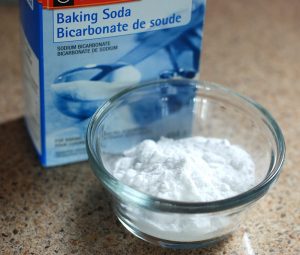5 Nature-Friendly Products for Spring Cleaning

Guest blogger Rebecca Kennedy
This post was written by guest blogger Rebecca Kennedy.
Roll up your sleeves and dig out those rubber gloves – winter is officially coming to a close, and that means it’s almost time for spring cleaning! It’s easy to clean your home safely and responsibly using products you already own or that are easily found at the supermarket. To spruce up your abode, here are five everyday items that are better for both nature and the environment, as well as your family’s health.
- Old towels and t-shirts. Instead of disposable wipes or washcloths, create some reusable ones by cutting up some towels or t-shirts into squares. They can be laundered in the washing machine (cold water, hang dry!) when they get grubby. For added cleaning power, use microfiber cloths, which have a natural charge that attracts dust and can be used dry or damp.
 White vinegar. Ah, versatile vinegar! Combine a 1:1 mix of white vinegar and water in a spray bottle for a DIY all-purpose household cleaner. (If you don’t like the smell of the vinegar, add a few drops of essential oil, perhaps lemon or lavender. Choose tea tree oil if you’re looking for a natural disinfectant.) Use the spray to clean laminate counters, stainless steel appliances and chrome surfaces. Spray vinegar on your shower curtain and walls to remove or prevent residue. Use (without added essential oils) as a mirror and glass cleaner.
White vinegar. Ah, versatile vinegar! Combine a 1:1 mix of white vinegar and water in a spray bottle for a DIY all-purpose household cleaner. (If you don’t like the smell of the vinegar, add a few drops of essential oil, perhaps lemon or lavender. Choose tea tree oil if you’re looking for a natural disinfectant.) Use the spray to clean laminate counters, stainless steel appliances and chrome surfaces. Spray vinegar on your shower curtain and walls to remove or prevent residue. Use (without added essential oils) as a mirror and glass cleaner.
- Baking soda. Employ this pantry staple as a scouring powder. For those stubborn bits of dried food on the kitchen counter or in the sink, sprinkle a bit of baking soda over the surface and then wash with a damp cloth, applying a bit of pressure. To clean the toilet: Sprinkle the bowl with 1 cup of baking soda. Wait 30 minutes and then spray with vinegar (see the DIY spray above). Scrub with a toilet brush and then flush.
- Lemon. To clean the buildup in your microwave: Put half of an unpeeled lemon and bit of the juice into a small bowl of water. Heat the bowl in the microwave to boiling, about 3 minutes. Leave the microwave door closed for an additional 5 minutes. (The steam created will moisten the gunk inside and allow for easy removal.) Open and wipe the interior with a clean cloth. Cut up the used lemon and run the pieces in your garbage disposal to clean and freshen.
 Olive oil. Many commercially manufactured wood polish aerosols are harmful if inhaled, sometimes causing dizziness or headaches. Mix your own polish instead by combining 1 cup of olive oil and a squirt of lemon juice in a plastic spray bottle. Spray onto a soft reusable cloth (never directly onto the surface) then rub on the wood to create shiny goodness. Squeaky door? Put a drop or two of olive oil in the hinge.
Olive oil. Many commercially manufactured wood polish aerosols are harmful if inhaled, sometimes causing dizziness or headaches. Mix your own polish instead by combining 1 cup of olive oil and a squirt of lemon juice in a plastic spray bottle. Spray onto a soft reusable cloth (never directly onto the surface) then rub on the wood to create shiny goodness. Squeaky door? Put a drop or two of olive oil in the hinge.
Last, but certainly not least, don’t underestimate the importance of fresh air. During the winter, many of us (understandably) keep our homes shut tight. As a result, residual gases from cooking and cleaning products can linger, making the indoor air unsafe and unhealthy, particularly to those with allergies or respiratory issues. Throw open your windows on a dry, warm day and get the air circulating.
Happy cleaning! Share your own green cleaning tips in the comments or on Facebook or Twitter!
Acknowledgements: HowStuffWorks, MedlinePlus



